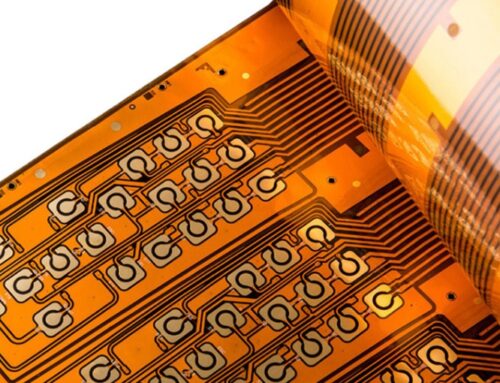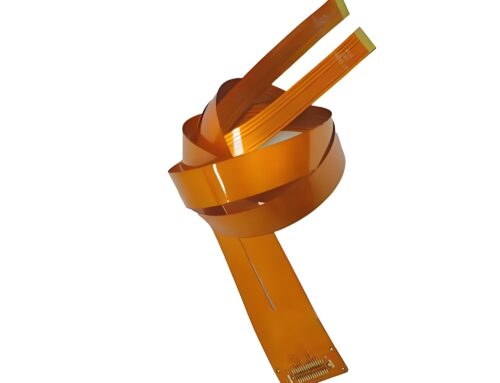Rigid Flex PCB Manufacturers: Expertise & Selection Tips
Introduction
As the market for rigid-flex PCBs expands, traditional PCB designers are increasingly focusing on these hybrid solutions. This shift may be driven by the contraction of the rigid PCB market, prompting manufacturers to seek solutions for filling manufacturing capacities. Alternatively, OEMs may be seeking simpler, more reliable methods with fewer part numbers for new product manufacturing.
Rigid PCB designers might be interested in understanding how to select a rigid-flex PCB supplier and initiate this process. With significant investment in OEM’s next-generation rigid-flex designs, it is crucial to choose the best manufacturer to ensure optimal production outcomes. New rigid-flex designs must be entrusted to suitable factories that offer the best manufacturing solutions.
This article explores the expertise, processes, and materials involved in manufacturing rigid-flex PCBs. A rigid-flex PCB combines rigid and flexible circuits, and in North America, there are generally two types of factories specializing in this technology:
Flexible Circuit Factories Specializing in Rigid-Flex PCBs
Rigid PCB Factories Transitioning to Rigid-Flex Production
Both types of factories are competing for the rigid-flex PCB business. From a high-level perspective, some rigid-flex PCBs should be produced by rigid PCB factories, while others should be manufactured by specialized flexible circuit factories. Understanding the differences between these two types of factories will help designers choose the right supplier and achieve better quality and delivery times. Both rigid and flexible PCB manufacturers have their strengths and weaknesses, so analyzing the differences in processes and how designers can adapt to these factories is essential.
Core Technologies and Manufacturing Processes
Rigid PCB Factories
Rigid PCB factories primarily offer multi-layer FR-4 solutions, with approximately 95% of circuits being on rigid rectangular substrates that do not require bending. These factories excel in complex stacking, high-density interconnects (HDI) for blind and buried vias, and multiple lamination cycles, with stable, repeatable processes and consistent design rules used by PCB designers over the years. However, as rigid PCBs become more complex with reduced board area and increased component density, challenges arise.
Flexible Circuit Factories
In contrast, flexible circuit factories specialize in custom mechanical solutions that can bend without breaking. Once electrical characteristics, component placement, support structures, non-standard profiles, copper grain orientation, and cover layers are added, rigid-flex PCBs represent a distinct category of PCBs. The design and manufacturing rules for flexible circuits differ significantly from those for rigid PCBs. Manufacturing flexible circuits is more labor-intensive and involves varying materials for each task.
Materials
The suppliers for rigid PCBs and flexible circuits differ considerably in terms of base materials, adhesives, and material processing. PCB factories typically use FR-4, prepregs, and electrodeposited (ED) copper. If HDI is provided, material options may include photosensitive dielectrics, resins, and dry film. Flexible circuit factories predominantly use polyimide dielectric materials, adhesives, and rolled annealed (RA) copper foil. Very thin materials are employed to achieve flexibility.
Copper Plating
PCB factories use full-panel or patterned plating processes. Copper is plated on all surfaces of the panel and vias, then etched away, leaving behind the circuit design and plated vias. Flexible circuit factories employ pad or patterned plating methods, plating copper only on pads and plated-through holes. Copper plating on flexible traces designed to bend is prone to cracking. For rigid-flex PCBs with small bend radii, it is crucial to ensure that the flexible sections are plated using patterned plating methods.
Design Considerations
Design factors for PCBs and flexible circuits are distinct. For instance, there are specific rules regarding vias.
Bend Radius
For rigid PCBs, bend radius is generally not a concern. However, for flexible circuits, bending is a critical issue. During the design and layout phase, factors such as material selection, bending location, and extent, as well as component placement, must be considered. IPC-2223 provides guidelines for calculating bend radius, typically recommending a radius of 12 times the thickness. The stiffness of flexible boards is primarily determined by copper weight, but polyimide thickness is also crucial.
Layout Design Factors
Design considerations for flexible circuits are diverse and differ significantly from those for rigid PCBs.
Chamfering: It is advisable to add chamfers (teardrops) to plated vias in bending areas to help distribute stress over a wider area, improving reliability.
Via Placement in Rigid-Flex PCBs: If vias are located in the flexible area of a rigid-flex PCB, they should be positioned at least 0.050” away from rigid-flex junctions and 0.050” from the start of bending areas. The same 0.050” rule applies to the rigid side of the PCB.
Routing: For bending and folding regions within a single metal layer, vertical routing of conductors is preferred.
Routing Between Multiple Flexible Layers: Routing should not be done on top of layers to avoid creating I-beam effects.
HDI: Rigid flex PCB manufacturers actively offer blind vias, buried vias, staggered vias, and stacked vias. The industry has made significant strides in high-layer counts and HDI. While flexible circuits feature smaller vias and characteristics, achieving blind, buried, and staggered vias is more challenging. However, advancements in flexible circuit technology are moving forward to better support these features.
Conclusion
Rigid-flex PCBs represent a hybrid solution combining rigid PCBs and flexible circuits. Rigid flex PCB manufacturers can provide high-quality solutions tailored to customer needs. OEM circuit designers, design engineers, or procurement managers should consider their specific requirements to determine the best solution and select the appropriate manufacturer.
If the rigid-flex circuit being designed has more characteristics of traditional PCBs, including multi-layer counts, dense assembly requirements, HDI needs, and blind, buried, or stacked vias, with flexible interconnects between two or more rigid sections, then a rigid PCB manufacturer might be the best choice.
Conversely, if the rigid-flex PCB features more flexible circuit functionalities, such as small bend radii, fine feature requirements, and thin stacks, and is a prominent part of the circuit, it may be necessary to contact a flexible circuit supplier.











Leave A Comment